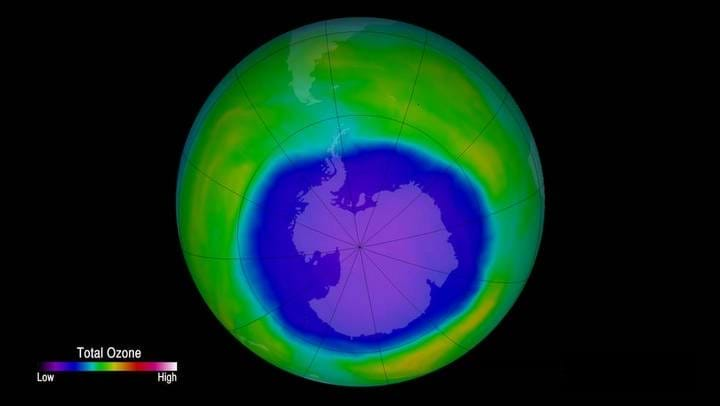Chinese insulation production thought to be source of rise in ozone-damaging chemical

A REPORT by the Environmental Investigations Agency (EIA) has discovered widespread use of the banned chemical CFC-11 in China, which corresponds to an unexpected increase of the chemical in the atmosphere.
Trichlorofluoromethane (CFC-11) is detrimental to ozone in the atmosphere and can deplete the vital layer of ozone that protects life on Earth from harmful UV radiation. The 1987 Montreal Protocol, of which China is a signatory, is a global agreement that was made to phase out the use of ozone-depleting substances, and this included banning CFC-11 worldwide by 2010.
A study published in Nature in May 2018 showed that while the decline in atmospheric CFC-11 was constant between 2002 and 2012, it slowed by 50% from 2012, indicating that CFC-11 was still being produced. The researchers identified eastern Asia as the potential source of the CFC-11 emissions.
The EIA, a non-profit environmental organisation, discovered through interviews with Chinese companies that the use of CFC-11 is common in production of polyurethane foam insulation. The insulation is in high demand due to China’s construction boom, and CFC-11 is better quality and cheaper than alternatives. The EIA report also found that it is easy to avoid inspections. A representative from one company told the EIA: “When the municipal environmental bureau runs a check, our local officers would call me and tell me to shut down my factory. Our workers just gather and hide together. It's pointless... government is going too far in these environmental protection efforts.”
Avipsa Mahapatra, climate campaign lead at the EIA, told BBC News: "We were absolutely gobsmacked to find that companies very openly confirmed using CFC-11 while acknowledging it was illegal."
The EIA estimated that 10,000–12,000 t/y of CFC-11 has leaked into the atmosphere from Chinese insulation production between 2012 and 2017, which is consistent with the scientific study which estimated that 8,000 to 18,000 t/y of CFC-11 had been added over the same time frame. These levels have the potential to reverse the healing that had started to take place in the ozone layer, and will set back the closing of the ozone hole by at least a decade.
"It is critical for the government of China not to treat these as isolated incidents," Mahapatra told BBC News. "We want them to clamp down but it's supremely important for them to carry out a comprehensive investigation into the sector. It has to result in seizures, it has to result in arrests so that people know there are harsh penalties for the production of CFC-11."
A Montreal Protocol working group is meeting in Vienna on 11 July to discuss the next steps.
EIA report: https://bit.ly/2MX6uN1
Nature http://doi.org/cp5g
Recent Editions
Catch up on the latest news, views and jobs from The Chemical Engineer. Below are the four latest issues. View a wider selection of the archive from within the Magazine section of this site.




